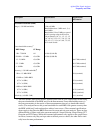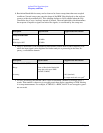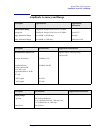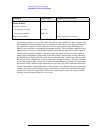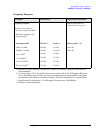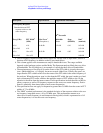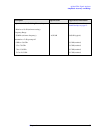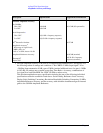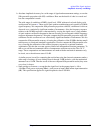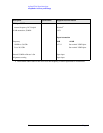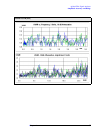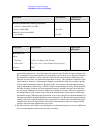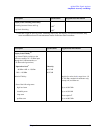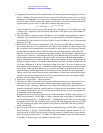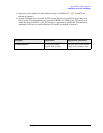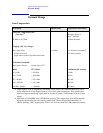
Chapter 1 35
Agilent EXA Signal Analyzer
Amplitude Accuracy and Range
b. Absolute Amplitude Accuracy for a wide range of signal and measurement settings, covers the
95th percentile proportion with 95% confidence. Here are the details of what is covered and
how the computation is made:
The wide range of conditions of RBW, signal level, VBW, reference level and display scale
are discussed in footnote a. There are 44 quasi-random combinations used, tested at a 50 MHz
signal frequency. We compute the 95th percentile proportion with 95% confidence for this set
observed over a statistically significant number of instruments. Also, the frequency response
relative to the 50 MHz response is characterized by varying the signal across a large number
of quasi-random verification frequencies that are chosen to not correspond with the frequency
response adjustment frequencies. We again compute the 95th percentile proportion with 95%
confidence for this set observed over a statistically significant number of instruments. We also
compute the 95th percentile accuracy of tracing the calibration of the 50 MHz absolute ampli-
tude accuracy to a national standards organization. We also compute the 95th percentile accu-
racy of tracing the calibration of the relative frequency response to a national standards
organization. We take the root-sum-square of these four independent Gaussian parameters. To
that rss we add the environmental effects of temperature variations across the 20 to 30 °C
range. These computations and measurements are made with the mechanical attenuator only
in circuit, set to the reference state of 10 dB.
A similar process is used for computing the result when using the electronic attenuator under a
wide range of settings: all even settings from 4 through 24 dB inclusive, with the mechanical
attenuator set to 10 dB. Then the worse of the two computed 95th percentile results (they were
very close) is shown.
c. Same settings as footnote a, except that the signal level at the preamp input is −40 to
−80 dBm. Total power at preamp (dBm) = total power at input (dBm) minus input attenuation
(dB). This specification applies for signal frequencies above 100 kHz.



